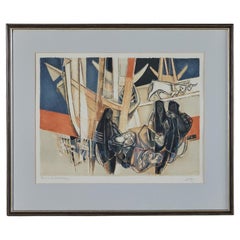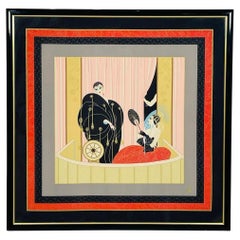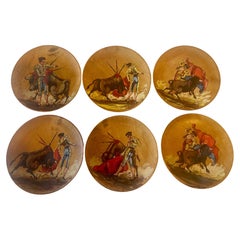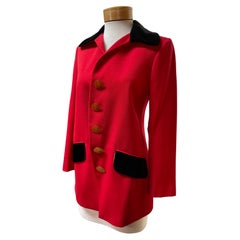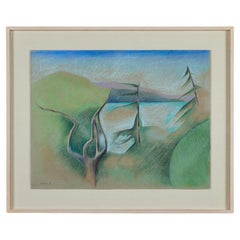California - Decorative Art
Mid-20th Century French Mid-Century Modern California - Decorative Art
Wood, Paper
1980s French Art Deco Vintage California - Decorative Art
Silk
20th Century Spanish Mid-Century Modern California - Decorative Art
Wood
20th Century English Minimalist California - Decorative Art
Wool, Velvet
Mid-20th Century American Mid-Century Modern California - Decorative Art
Crayon
2010s American Modern California - Decorative Art
Birch, Maple
Mid-20th Century Moroccan Moorish California - Decorative Art
Canvas
Early 20th Century Chinese California - Decorative Art
Glass, Wood, Paper
20th Century California - Decorative Art
Canvas
Early 20th Century Chinese California - Decorative Art
Glass, Wood, Paper
20th Century French California - Decorative Art
Porcelain
Mid-20th Century Asian Chinoiserie California - Decorative Art
Paper
Early 20th Century British California - Decorative Art
Wood
1960s Spanish Vintage California - Decorative Art
Wood, Paper
Mid-20th Century American Mid-Century Modern California - Decorative Art
Paint, Plexiglass
Mid-20th Century Italian Folk Art California - Decorative Art
Ceramic
20th Century American Modern California - Decorative Art
Aluminum
2010s American Modern California - Decorative Art
Latex, Paint
21st Century and Contemporary American Mid-Century Modern California - Decorative Art
Resin
Mid-20th Century American Mid-Century Modern California - Decorative Art
Crayon
Mid-20th Century American Mid-Century Modern California - Decorative Art
Canvas, Paint, Acrylic
Late 20th Century Chinese Japonisme California - Decorative Art
Porcelain
Late 20th Century German Post-Modern California - Decorative Art
Porcelain
1850s French French Provincial Antique California - Decorative Art
Mother-of-Pearl
Late 20th Century American Expressionist California - Decorative Art
Porcelain
Early 20th Century French Anglo Raj California - Decorative Art
Paper
Late 20th Century American Mid-Century Modern California - Decorative Art
Paper
1980s American Modern Vintage California - Decorative Art
Paint, Canvas
1950s Spanish Vintage California - Decorative Art
Glass, Wood, Paper
1980s American Modern Vintage California - Decorative Art
Canvas, Paint
Late 20th Century Moroccan Islamic California - Decorative Art
Ceramic
Late 19th Century Austrian Beaux Arts Antique California - Decorative Art
Gesso, Canvas, Wood, Giltwood
1980s American Art Deco Vintage California - Decorative Art
Enamel
1930s American Folk Art Vintage California - Decorative Art
Wood, Paint
21st Century and Contemporary English California - Decorative Art
Plexiglass
1970s French Vintage California - Decorative Art
Glass, Wood, Paper
Late 20th Century Mexican Mid-Century Modern California - Decorative Art
Silver
Late 20th Century Greek Greco Roman California - Decorative Art
Porcelain
1970s American Mid-Century Modern Vintage California - Decorative Art
Aluminum
1970s Mexican Brutalist Vintage California - Decorative Art
Metal
1950s American Mid-Century Modern Vintage California - Decorative Art
Copper
Mid-20th Century Thai Folk Art California - Decorative Art
Paper
19th Century European Antique California - Decorative Art
Bronze
Mid-20th Century Belle Époque California - Decorative Art
Giltwood
Early 1900s Edwardian Antique California - Decorative Art
Glass
1930s French Art Deco Vintage California - Decorative Art
Wood, Paint
1830s European Antique California - Decorative Art
Paint, Lacquer, Giltwood, Wood, Canvas
Mid-20th Century Turkish Moorish California - Decorative Art
Ceramic
Late 20th Century British Victorian California - Decorative Art
Paper
20th Century California - Decorative Art
Porcelain
20th Century Japanese Japonisme California - Decorative Art
Silk
Mid-20th Century American California - Decorative Art
Natural Fiber
Mid-20th Century Mexican Folk Art California - Decorative Art
Ceramic
1970s American Mid-Century Modern Vintage California - Decorative Art
Cotton, Wood, Driftwood
19th Century Antique California - Decorative Art
Porcelain
1980s American Modern Vintage California - Decorative Art
Wood, Paint
1970s Japanese Vintage California - Decorative Art
Glass, Wood, Paper
19th Century Italian Baroque Antique California - Decorative Art
Gesso, Canvas, Wood
Read More
At Colonial Williamsburg, Everything Old Is New Again
With the help of a new director, the Virginia institution's folk art and decorative arts museums are undergoing extensive upgrades.
New York’s Hirschl & Adler Showcases the American Workmanship and Design Panache of Neoclassical Treasures
The gallery's latest exhibition proves that museum-quality pieces entice and inspire, whether in traditional or more modern interiors.
